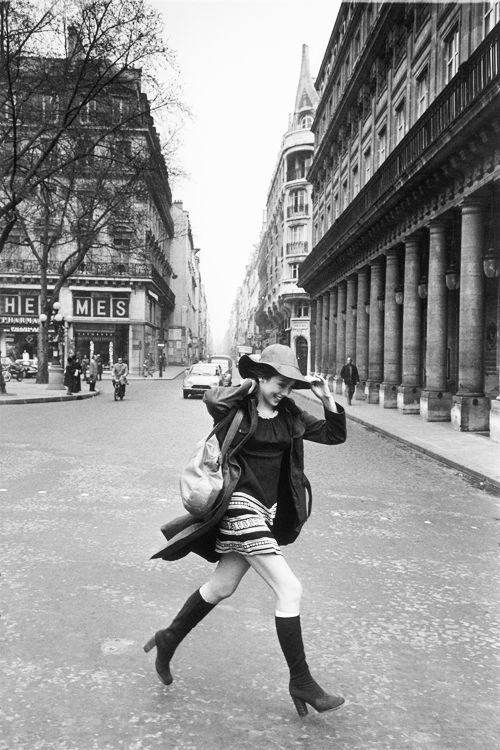Paris Then
- Dave Nelson

- Aug 28, 2020
- 3 min read
The young woman pictured is the legendary French actress, Isabelle Adjani. She is darting across a street in Paris in 1974. Judging from the lack of foliage on the trees and the water streaming in the gutter, I would guess it is in late autumn.
The year is significant because Barb and I first visited Paris in 1974. I like this picture because it says a lot about the differences between Paris then and Paris now, in 2014.
The bustling Mademoiselle Adjani is the central subject, of course. In this photo, she is 19. She was born in a suburb of Paris to an Algerian father and a German mother. (She speaks, fluently, French, Italian, English, and German.) One year after this shot, she would play the title role in François Truffaut’s The Story of Adele H and become an international star.
What’s notable is how she’s dressed. She looks like une Parisienne. Back then, Parisians did not look like Americans. The affluent Parisians defined the concept of style. While not as au courant (fashionable), the middle and working class folks at least looked dignified. The young, Sorbonne types just looked…well, weird. But they didn’t look like Americans.

Now, on the streets of Paris, I can’t tell the Parisians from the Americans or the Germans or the Brits. We seem to have globalized ourselves into an international apparel monotony. Quel domage.
Notice the traffic, two cars and a guy on a scooter. I’m not sure which street this is (Rue de Rivoli?) but it is clearly a major thoroughfare. Back then, you could still find parking spaces on Parisian streets and you had a good chance of surviving an episode of jaywalking. Nowadays, Paris traffic is thick, thunderous, and relentless.
I mentioned Mademoiselle Adjani’s facility with language. In 1974, Parisians required foreigners to speak French. If we tried speaking English, we were either ignored or abused. But the Parisians were very conciliatory if we attempted to speak in French, no matter how badly.
Now the Parisians seem to have no time for French! They all know English and they have jobs to do. They are not paid to be language teachers so they expect you to get to the point. They have no tolerance for my measured, classroom français. They jump my inquiries and demand, in English, “So, what do you want?” Charles DeGaulle is turning backflips in his grave.
Yeah, I know. Who in hell is Charles DeGaulle?
In 1974, les boutiques et les magazins (shops and stores) of Paris were actually interesting. You simply didn’t see merchandise like that back home on Main street. Nowadays I can find everything on l’Avenue Montaigne down at San Jose’s Valley Fair shopping mall. That is a terrible downside to global merchandising. Every place looks like every other place. And, yes, we Americans are probably responsible for it.
On the good side, Paris has far fewer smokers, though there are still enough to drive you insane. The merde de chien (dog shit) has subsided on the sidewalks of Paris, thanks to a national legislative effort and a general decline in dog ownership.
My point is, Paris has changed significantly since we first visited. Is it still worthwhile? The other day I saw a bumper sticker that read, “The worst day fishing is better than the best day working.” I apply that same sentiment to Paris.
The worst day in Paris is still better than most days anywhere else.



留言